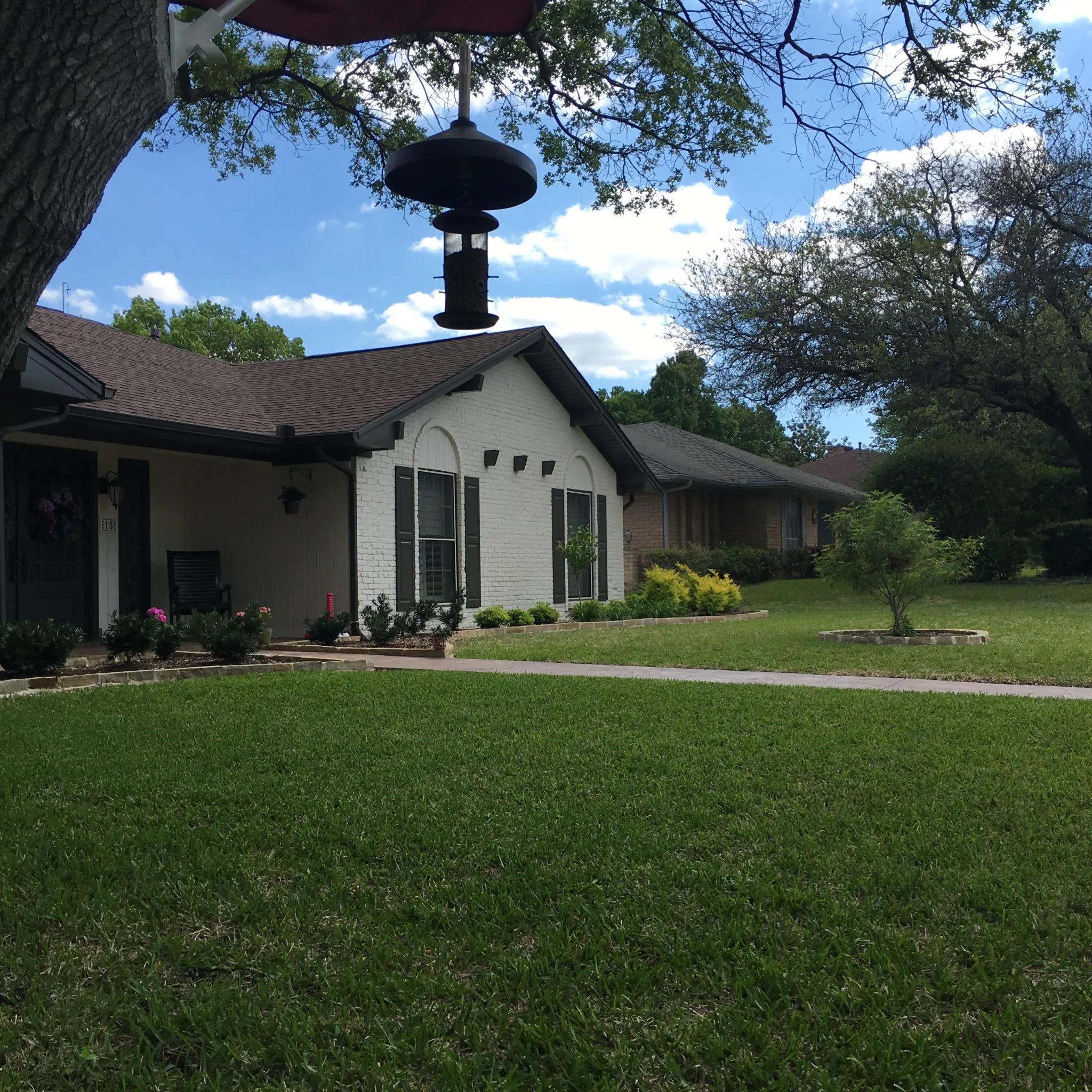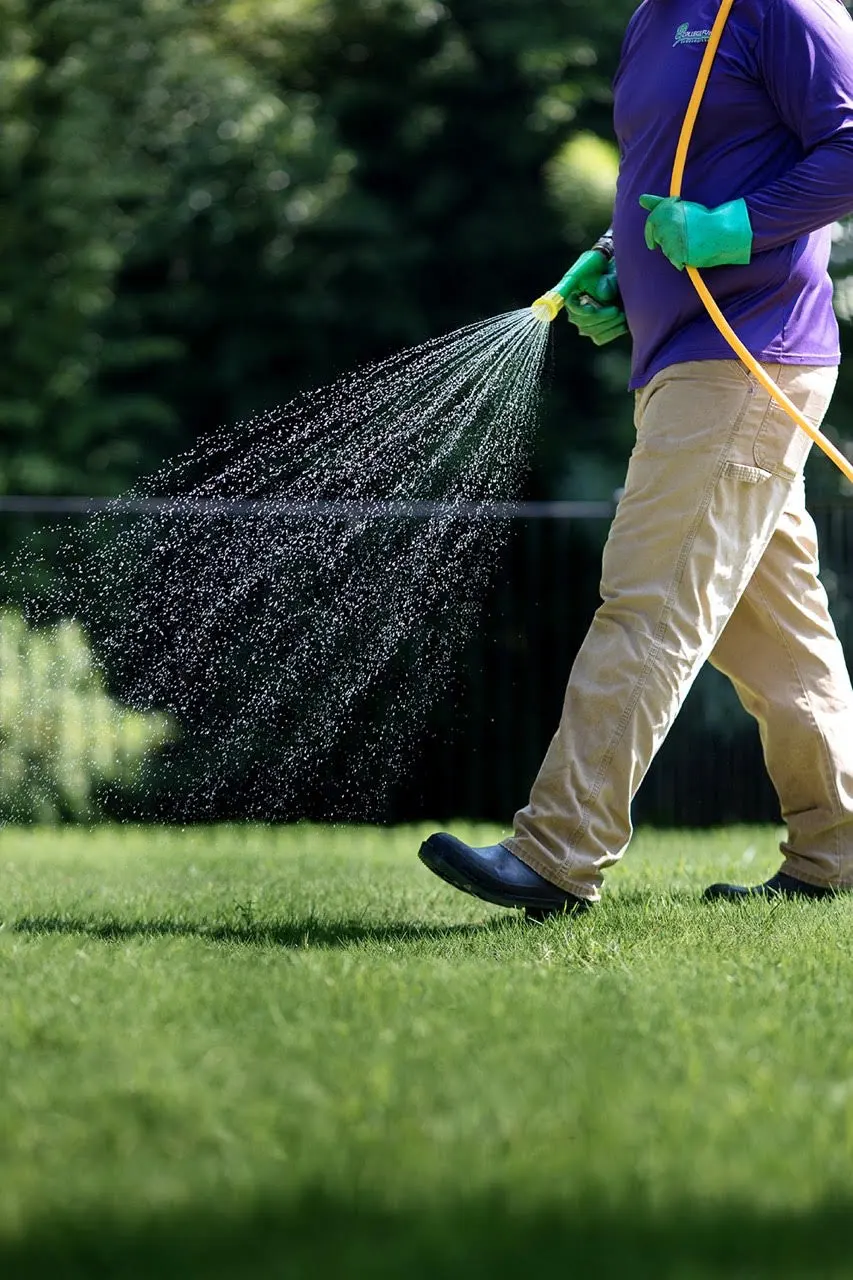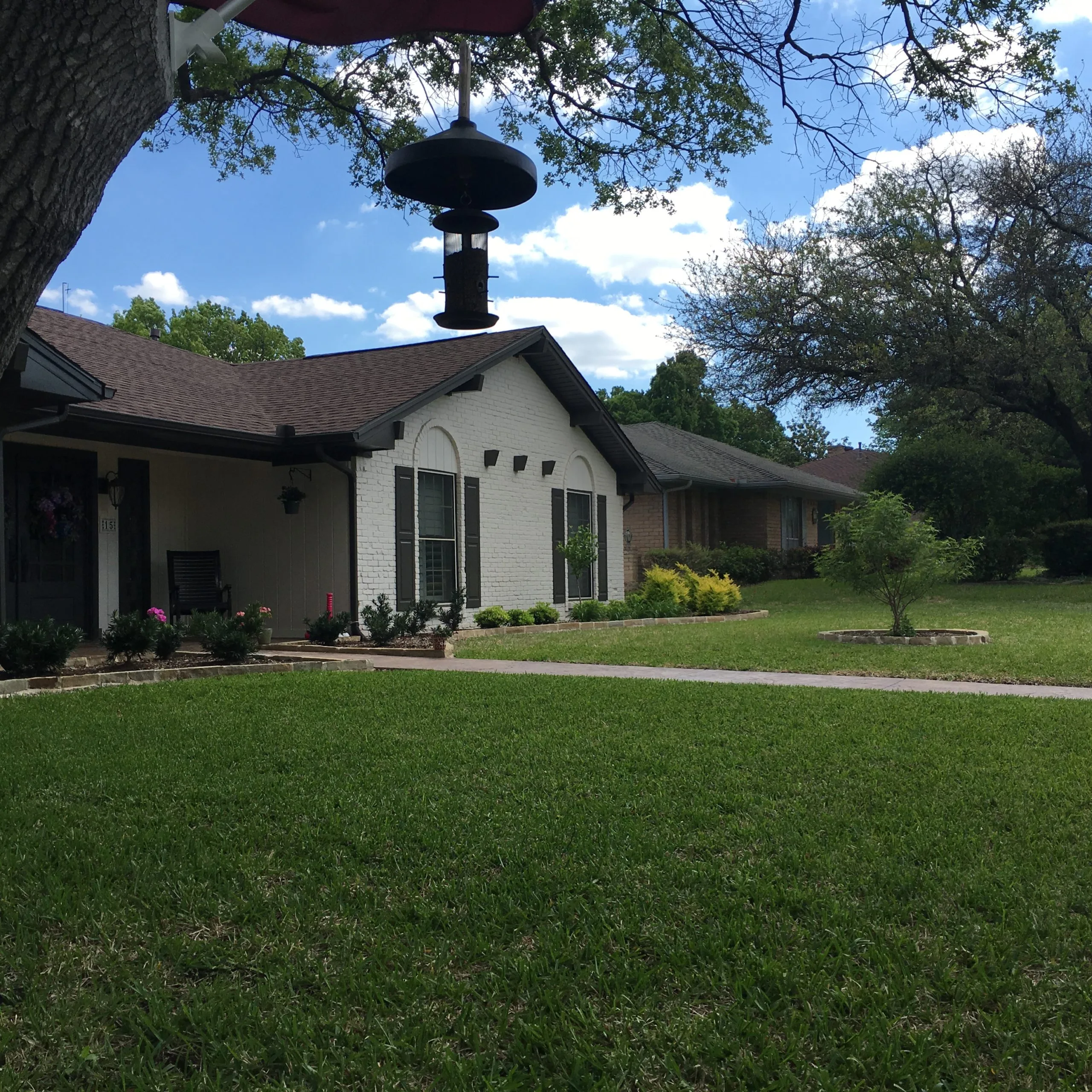Like most problems we encounter, annual or bi-annual weeds get worse when we ignore them. Ask any landscaper and they will tell you, the easiest time to manage weeds in a healthy lawn is before they emerge. Once a weed’s root structure is allowed to spread and a weed is allowed to grow, it becomes much more difficult to control the spread and coverage of the weeds.
The timeframe for applying pre-emergent treatment varies by location. Here in North Texas, we want to apply pre-emergent treatments in October/November. Is that because we want to make sure the Fall is spooky for weeds too? No. It’s actually pretty scientific.

Weeds grow at certain temperatures. That growth slows as temperatures drop. However, if we wait too long and the ground temperature falls below a certain temperature, the weeds’ root structures go into dormancy which makes them resistant to pre-emergent treatments. Ideally, we want to apply our treatments when the soil reaches about 70?. This is when the weed roots have begun to emerge and they are still soaking up nutrients so they will last through the winter. It is also before they’ve had a chance to germinate.
Bottom line: Germination makes weeds much harder to control.
There are a lot of weeds that can affect our lawns here in North Texas including clover, dandelions, and crabgrass. But in Fall/Winter, the weeds we need to be most wary of are bluegrass, henbit, and chickweed. And sure, you could always wait until Spring and pick your weeds out one by one by hand, but if you want to save yourself (and your back) some hardship, it’s best to consider a pre-emergent treatment.
Two Types of Pre-Emergent Controls
There are two ways to control pre-emergents: root inhibitors and germination inhibitors. We’re so gung-ho over here at College Fund Landscaping, we use both depending on the time of year. In the Fall, root inhibitors work best.
Root inhibitors dig deep into weed seeds and interrupt the ability of their cells to divide. This prevents the weeds from spreading their roots. Without roots, the weed plants cannot grow. This chemical treatment is especially effective because it does not allow weed seeds to germinate and potentially spread more weeds around an otherwise healthy lawn.
In Spring, we apply the other type of pre-emergent control, germination inhibitors. These work similarly to alter the cellular structure of the pre-emergent weed, this time preventing the weed from germinating. This strips the weed of nutrients and causes the roots to wither and die.
A Multi-Pronged Approach
The best way to think about your lawn is that it is in a constant struggle for survival. Lawns grow from healthy soil, and weeds are consistently going to struggle to muscle their way in. In order to ensure your lawn wins the long battle, it is important that you bring in some allies.

College Fund Landscaping works hard to make sure your lawn stays strong all year round. To achieve this, we use multiple applications of pre-emergent treatments at various times during the year. Each treatment, whether it is a root inhibitor or a germination inhibition, is specially chosen based on the behavior of the pre-emerging weed. We stop them whether they are trying to germinate or spread roots. We provide the backup you need so your lawn stays healthy and happy all year.
One thing that is important to note is that pre-emergent treatments will vary slightly depending on the makeup of your lawn. St. Augustine and Zoysia grasses need a lighter mix than the more sturdy Bermuda grass. Generally, unless you have time to do the research to ensure your pre-emergent treatments are only killing the weeds in that lovely green lawn of yours, it is best to leave it to the experts.
Need help? Give us a call today and let’s discuss how College Fund Landscaping can ensure your lawn wins the war on weeds.



Comments (0)
Thanks for your comment!
Thanks for your feedback! Your comments have been successfully submitted! Please note, all comments require admin approval prior to display.
Error submitting comment!
There is a problem with your comment, please see below and try again.